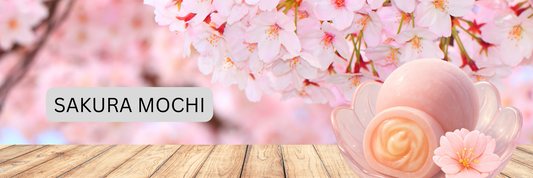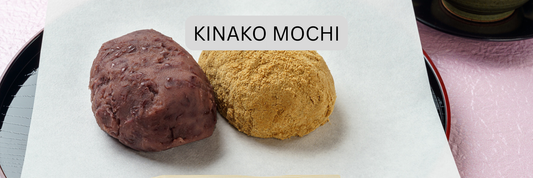Seaweed crackers are gaining traction as a healthier alternative to potato chips—but what makes them so special? In this post, we explain exactly what seaweed crackers are, break down their nutritional profile, share step-by-step recipes, and highlight the top commercial brands worth trying. You’ll also discover how many crackers are safe to eat daily and ideas to pair them with your favorite dips or meals. If you’re exploring better snack options, you’ll want to read on.
What are seaweed crackers? (Seaweed rice crackers / nori crackers explained)
Seaweed crackers are crunchy snacks that combine the rich umami flavor of roasted seaweed (nori) with rice or other grains to create a light, crisp bite. Traditionally, they come from Japan and are often called nori maki arare (rice crackers wrapped in seaweed). In modern food culture, they’ve evolved into various styles — from thin, roasted seaweed sheets to rice crackers coated in sesame, tamari, or even tempura batter.
A typical seaweed cracker is made from rice flour, tapioca, or wheat flour mixed with seasonings, pressed into thin shapes, and baked or fried until crisp. Then, roasted nori is layered or wrapped around the cracker to add a salty, umami kick. Some versions, like Thai Taokaenoi tempura seaweed chips, lean toward bold flavors such as wasabi, teriyaki, or spicy chili. Others keep it simple with plain roasted seaweed and a light dusting of sea salt.
These crackers are versatile: they can be enjoyed as a snack, paired with soups and salads, or even used as garnishes for poke bowls and ramen. For anyone who loves crunchy snacks but wants something lighter than potato chips, seaweed crackers deliver both taste and health.

Why seaweed crackers are trending (flavor, health, sustainability)
The rise of seaweed crackers can be explained by three major factors: taste, health benefits, and sustainability.
First, the taste. Seaweed provides an umami-rich flavor that many people find addictive. When combined with a crunchy rice base, the result is a balance of savory, salty, and satisfying. Unlike potato chips, which can feel heavy, seaweed crackers are light but still deliver a strong flavor punch.
Second, health. Seaweed is naturally low in calories and high in iodine, fiber, vitamins A, C, and K. When paired with rice or other whole grains, the crackers often provide a modest amount of protein and minerals. Many brands now market vegan seaweed crackers, gluten-free seaweed rice crackers, or even keto-friendly seaweed snacks to appeal to different diets. However, shoppers should always check sodium levels, as flavored varieties can be high in salt.
Finally, sustainability. Seaweed farming is one of the most environmentally friendly food production methods. It doesn’t require freshwater, fertilizer, or land. Some artisanal brands highlight their sourcing — from Kona-grown limu in Hawaii to organic nori from Korea or Japan — giving buyers confidence in both taste and environmental impact.
Types & best uses (choose the right cracker for your snack or dish)
Seaweed crackers aren’t all the same. Choosing the right type depends on your preferences:
- Roasted seaweed sheets: These are the lightest, often just thin baked sheets dusted with sesame or salt. Perfect for low-calorie snacking.
- Nori-wrapped rice crackers: Common in Japanese snacks, these combine chewy-crunchy rice bases wrapped in nori strips. They’re excellent for pairing with tea or sake.
- Tempura seaweed chips: These are fried versions, often from Thailand, with thick batter and bold seasonings (wasabi, BBQ, spicy chili). They feel more like chips than crackers.
- Seed & grain blends: Premium health-focused brands combine nori with flaxseed, quinoa, or brown rice. These are marketed toward organic and gluten-free consumers.
Seaweed crackers are not only snacks; they can also be used as garnishes. Many home cooks crumble roasted seaweed crackers over salads, soups, or poke bowls for extra crunch. Others serve them as appetizers with dips like hummus, guacamole, or cream cheese.

Best seaweed crackers: top picks (buyer’s list + short buying guide)
With so many brands on the market, here are the categories to help buyers choose:
- Best overall: Nori rice crackers from established Japanese brands. They balance crunch, flavor, and availability.
- Best for health: Seed & grain seaweed crackers marketed as gluten-free, organic, vegan, and lower in sodium. Brands like Mary’s Gone Crackers fit this category.
- Best flavored: Thai and Korean brands with tempura-style seaweed crackers, offering flavors like wasabi, teriyaki, kimchi, or BBQ.
- Budget-friendly: Retailer-branded roasted seaweed crackers available at Walmart, Target, or Costco. Affordable and widely available.
Buyer tips:
- Compare serving size and calories (many are ~90–110 calories per 25g).
- Look at sodium content if you’re watching salt intake.
- Consider pack size (single-serve for on-the-go, bulk packs for families).
- Check ingredients for allergens like soy or wheat.
Seaweed crackers nutrition & allergies (quick facts)
On average, a 25g serving of seaweed crackers contains:
| Nutrient | Range (per 25g) | Notes |
|---|---|---|
| Calories | 90–110 kcal | Light snack compared to chips |
| Protein | 2–3 g | From rice & seaweed |
| Fat | 2–4 g | Higher in tempura-style |
| Carbs | 18–20 g | Rice-based crackers |
| Sodium | 150–300 mg | Flavored types can exceed 400 mg |
Allergen notes:
- Many varieties use soy sauce (check for gluten if you’re celiac).
- Some brands include wheat flour in the cracker base.
- Vegan and gluten-free versions are available, but always check the label.
Seaweed provides iodine, which supports thyroid health. However, eating excessive amounts daily can lead to too much iodine intake. Moderation is key.
How to make seaweed crackers at home (recipe & troubleshooting)
Simple 2-ingredient baked seaweed crackers
Ingredients:
- 8–10 roasted seaweed sheets
- 1 cup rice paper (cut into squares)
Steps:
- Preheat oven to 350°F (175°C).
- Brush rice paper lightly with sesame oil or olive oil.
- Press rice paper onto seaweed sheets.
- Bake for 8–10 minutes until crisp.
- Cool and break into bite-size crackers.
Flavor variations:
- Sprinkle sesame seeds or chili flakes before baking.
- Brush with tamari or soy sauce for a salty glaze.
- Add curry or garlic powder for a bold twist.
Troubleshooting:
- If crackers turn chewy, extend baking by 2–3 minutes.
- Store in an airtight jar for up to 5 days to maintain crispness.

Sustainability & sourcing: why origin matters
Seaweed farming is one of the world’s most sustainable food sources. Unlike crops that require irrigation or fertilizers, seaweed grows naturally in the ocean, absorbing nutrients while improving water quality. It is often called a climate-friendly food because it helps sequester carbon.
Brands that highlight origin — such as Hawaiian limu, Korean nori, or Japanese kombu — often command premium prices. For conscious consumers, choosing seaweed crackers made from responsibly farmed seaweed supports both local economies and marine ecosystems.
Buyer’s checklist
Before buying seaweed crackers, consider:
- Calories per serving
- Sodium content
- Allergen information (gluten, soy, wheat)
- Flavor (plain, wasabi, teriyaki, chili)
- Packaging size and freshness
- Sourcing transparency (organic, local, sustainable)
FAQ
Are seaweed crackers good for you?
Yes, in moderation. They are low in calories, contain iodine and fiber, and can be healthier than potato chips. Just watch sodium levels.
What are seaweed crackers made out of?
They are typically made from roasted seaweed, rice flour or other grains, seasonings like sesame or tamari, and sometimes tempura batter.
How many seaweed packets can I eat in a day?
Most dietitians recommend 1–2 servings per day. Eating too much seaweed may increase sodium or iodine intake beyond healthy levels.
Are seaweed crackers gluten-free?
Some are, especially those made with rice flour and tamari. Always check labels for wheat or soy sauce containing gluten.
What’s the difference between seaweed snacks and seaweed crackers?
Seaweed snacks are usually thin roasted sheets. Seaweed crackers combine seaweed with rice or grains for more crunch and substance.
Conclusion
Seaweed crackers are more than just a trendy snack — they combine taste, health, and sustainability in one crunchy bite. From traditional Japanese nori rice crackers to modern tempura-style chips, there’s a variety for every palate. You can buy them in supermarkets, online, or even make them at home in under 20 minutes.
Whether you’re choosing the best brand, comparing nutrition facts, or trying your hand at homemade recipes, seaweed crackers offer a versatile snack option that fits many diets. Start with a small pack, explore flavors, and enjoy the umami-rich crunch of this ocean-inspired treat.
Read More:







